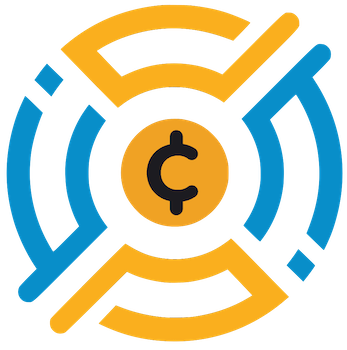Blockchain technology has undeniably transformed the digital landscape, yet its complexity often leaves users feeling overwhelmed. This is particularly true for those not immersed in the world of cryptocurrencies. To address these challenges, Abstract Web3 has recently launched its mainnet, aimed at serving as a user-friendly Ethereum Layer 2 (L2) solution. By prioritizing a simplified experience, Abstract aspires to facilitate the transition from traditional online paradigms—often referred to as Web2—to the more intricate ecosystem of Web3. This article will delve into Abstract’s origins, technical architecture, distinctive features, and potential implications for the future of consumer cryptocurrency usage.
Abstract is a project born out of Igloo Inc., the company that gained prominence with its Pudgy Penguins NFT collection. With a team of talented Web3 developers and innovators, including Michael Lee, Luca Netz, and Lorenzo Melendez, Abstract addresses the existing barriers to blockchain adoption. Previous cryptocurrency platforms have often featured high transaction fees, cumbersome user onboarding processes, and unintuitive interfaces. Recognizing the need for a more accessible platform, Abstract focuses on delivering a seamless experience, enabling users—regardless of their technical background—to interact with blockchain technology effortlessly.
The recent $11 million fundraising led by Founders Fund, with support from notable investors like 1kx and Fenbushi Capital, further underscores the commitment behind Abstract. The mission of Igloo Inc. extends beyond just creating another blockchain; it seeks to enhance crypto adoption by placing simplicity and cultural relevance at the forefront.
At its core, Abstract employs Zero-Knowledge (ZK) rollups—a sophisticated technique that helps streamline the processing of transactions. This method allows multiple transactions to be bundled together, significantly reducing network congestion and associated costs. The technology is built on the ZKsync Stack, which not only enhances speed and security but also ensures the platform is EVM-compatible. This compatibility means that developers can seamlessly transition existing Ethereum applications to Abstract, eliminating barriers to entry for application developers looking to expand their audience.
A significant advantage of Abstract’s structure is its focus on account abstraction, allowing wallets to operate akin to smart contracts. This innovation simplifies the user experience by enabling credentials recovery through email or social media accounts instead of complicated seed phrases. This accessibility could be a game-changer, particularly for less tech-savvy users.
Central to Abstract’s offering is The Portal—a carefully curated hub that provides users access to over 100 on-chain applications. By signing up with just an email address, users can explore a range of categories, from gaming to social networking, without the usual technical hurdles associated with blockchain experiences. The design of The Portal draws inspiration from the user-friendly aesthetics of popular websites, providing an intuitive interface that encourages new users to delve deeper into the ecosystem without retreating in confusion.
The Portal enhances the user experience further by categorizing apps based on popularity, reviews, and functionality. This thoughtful organization streamlines the discovery of valuable applications, ensuring users can quickly find the tools that resonate with their interests.
Abstract also introduces an innovative governance system called “Panoramic Governance,” which actively incentivizes user participation in the decision-making process. By distributing fees to active voters and empowering them to support projects that deliver value, Abstract aligns the interests of developers with those of the user community. This approach not only fosters a more engaged user base but also creates a sense of ownership among participants, enhancing the platform’s credibility and attractiveness.
Moreover, users can earn “XP” (experience points) through on-chain activities, unlocking potential benefits and creating a gamified sense of progress. This framework encourages sustained engagement and participation, vital for cultivating a vibrant blockchain ecosystem.
Abstract is poised to cater to various aspects of consumer cryptocurrencies, focusing on discretionary, necessary, and essential spending. By targeting early adopters interested in gaming, entertainment, and social applications, Abstract aims to create a culturally relevant platform that resonates with everyday users. Its features enable creators to establish direct connections with audiences, reinforcing the idea of blockchain as a dynamic social space rather than merely a formidable database.
As Abstract incorporates popular tools like Magic Eden for NFT trading and works with brands to create digital collectibles, it attempts to normalize blockchain technology within day-to-day interactions. By blending fun, cultural significance, and financial practicality, Abstract rides the wave of interest in cryptocurrencies while aiming to make digital engagement more accessible and enjoyable.
Joining Abstract is as simple as visiting The Portal, where users can register using their email. The integration of account abstraction means users are free from the cumbersome task of managing complex recovery phrases. Upon entry, users are invited to explore a list of curated dApps, participate in live streams, engage with peers, or enjoy gaming experiences—all without requiring any specialized technical knowledge.
As Abstract continues to evolve, potential users should stay informed about fresh features, exciting partnerships, and community-driven events that will enhance their engagement with this burgeoning ecosystem. Abstract Web3 is undoubtedly paving the way for a more inclusive and user-friendly blockchain experience, with the potential to reshape how consumers interact with digital technologies in the years to come.
















Leave a Reply